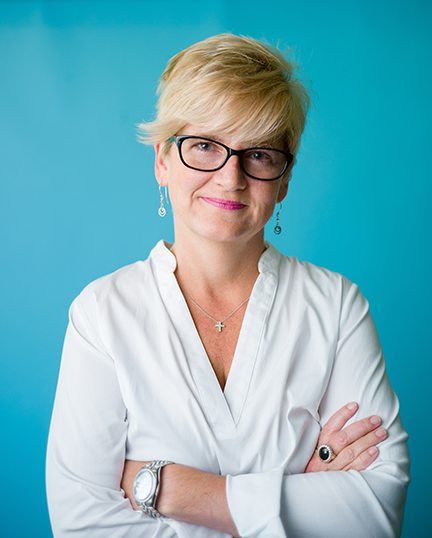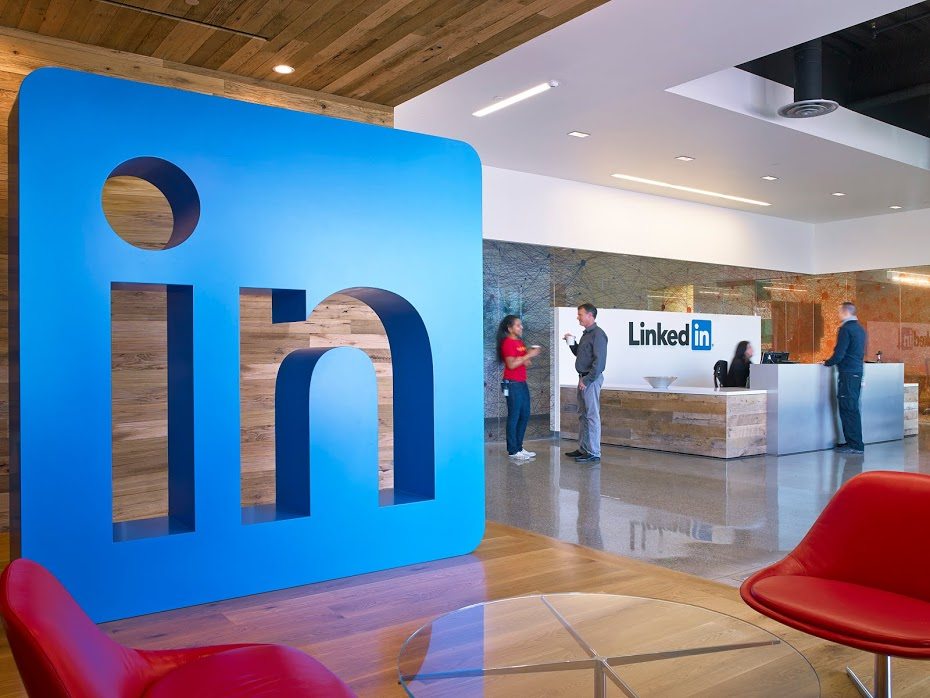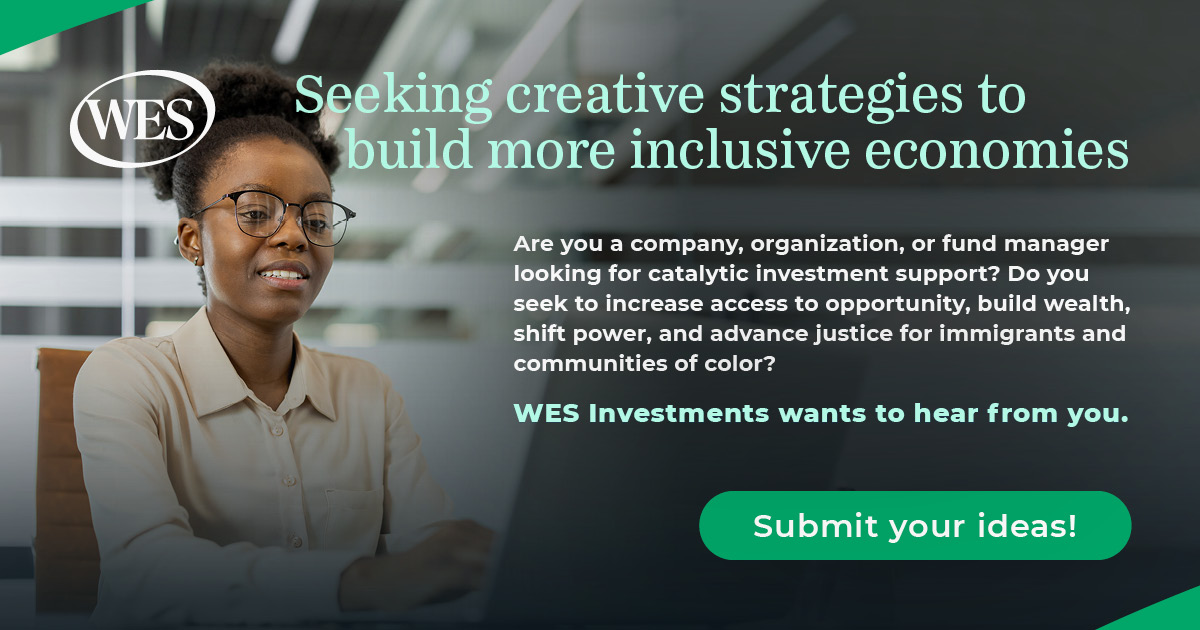“Honey, talent is the magic of any company.” That’s what Pat Wadors’ uncle Roland told her when she was just 20 years old. A career counseling test had just suggested that “personnel” might be a good field for her, so she went to learn more about it from her uncle, who worked in HR. After hearing about all of the specialties she could choose and the enormous influence that those human resources could have on a company’s success, she decided right then that her goal was to someday work as the head of HR, ideally somewhere big and interesting.
Several decades of dedication later, she’s making a name for herself as senior vice president of global talent organization at LinkedIn — a company that is itself focused on helping other businesses solve human resources problems. “I love what I get to do,” she says. “It’s the best gig I’ve ever had in my life. Here I am, head of talent at a talent-focused organization that makes revenue on talent products. That’s pretty geeky. That’s pretty cool. You’re in my space. I get to be customer zero.”
Stepping into Wadors’ fourth-floor office at LinkedIn’s Silicon Valley headquarters, it’s clear she’s aiming for a very different vibe than the buzz-kill, “follow-the-rules” stereotype of what an HR department is like. Her desk is made from refurbished barn wood, there’s an inviting seating area with bold-patterned chairs and carpet, a giant whiteboard beckons on one side of the room, and her own colorful paintings enliven the other walls. The mood is deliberate — she’s intentional about curating the experiences people have around her — and it reflects her philosophy on what her job is all about. “I get to yes, I don’t start with no,” she proclaims. “I don’t lead by rules, I lead by ‘What are you trying to solve for?’”
Workplace Diversity: “We Failed.”
Lately, a big part of what Wadors is trying to solve for is the thorny question of diversity: how to create a culture that truly, organically fosters more of it and harnesses the clear business benefits it brings. “Over the past decade, technology companies and their leaders have launched diversity and inclusion initiatives, hoping to make employees of all backgrounds and experiences feel welcome in our industry,” she wrote in a 2016 Harvard Business Review article. “We failed. The data shows that, especially in the tech space, we have not moved the needle on the number of women, blacks, or Latinos in our ranks, despite efforts to do so. Why not? What are we missing?”
Wadors thinks she has an answer, a missing piece of the diversity puzzle: belonging. “Only when we feel like we truly belong do we present our best unique selves, bringing more creativity and energy to the workplace each day,” she writes on LinkedIn. Despite all the talk in her field about recruiting and pipelines and unconscious bias, no one was talking about the feeling of being a part of a company’s culture or not — and how that affects who chooses to join or stay.
Wadors is now on a mission, both inside LinkedIn and beyond, to explore what it means to bring this idea of “belonging” into the heart of our conversations about how to create the best workplace for all. Conscious Company’s Aaron Kahlow recently sat down with her to discuss what “belonging” really means, how to create thriving company cultures, and more.
LinkedIn At a Glance
- Location: Sunnyvale, CA
- Founded: 2002
- Number of Employees: 10,000+
- Impact: 500 million registered members worldwide
- Recognition: Included in the Human Rights Campaign’s 2017 Corporate Equality Index; Ethisphere’s World’s Most Ethical Companies list; Glassdoor’s Best Places to Work 2017 Employees’ Choice list; and Business Insider’s list of the 50 Best Places to Work in 2017, According To Employees.
- Structure: For-profit
- 2016 Revenue: $960 million
- Mission Statement: “Connect the world’s professionals to make them more productive and successful.”
Interview
Pat Wadors on Diversity of Thought, Storytelling, and Treating People Beautifully
Why is this human resources work your passion?
 Pat Wadors: On average, 80 percent of a company’s operational expense is directly related to people. There’s no way around it. That’s on average. If you’re a service organization, you’re in the high 90 percent, and if you’re in a capital intensive , it’s maybe 25 percent, but still meaningful in how you navigate the market. This is the magic of talent: getting the right leaders and the right tempo and the right culture. You pay too much, you lack profit. You pay too little, you have turnover.
Pat Wadors: On average, 80 percent of a company’s operational expense is directly related to people. There’s no way around it. That’s on average. If you’re a service organization, you’re in the high 90 percent, and if you’re in a capital intensive , it’s maybe 25 percent, but still meaningful in how you navigate the market. This is the magic of talent: getting the right leaders and the right tempo and the right culture. You pay too much, you lack profit. You pay too little, you have turnover.
My uncle taught me that if you unleash people’s discretionary effort, that purpose-driven person, into the work the company needs to do, you unleash unlimited power and opportunity for that business. It just makes business sense to align person with passion, purpose, and business, and celebrate who they are in a respectful way to unleash that capability in the marketplace.
That’s why being head of talent was exciting to me, because you can tweak the levers to get to the outcome of a great culture, this amazing experience, and teach people that even when you’re giving bad news — when I tell you of a performance gap or your job’s being eliminated — I can help you feel respected and supported, your anxiety is lower, you’ve been communicated to transparently along the way. You feel that I care about the outcomes, and if I can’t help you in today’s job, let me help you get connected to somebody else, let me help you get to your next gig. If we can teach every leader to do that, and every employee to do that, the companies really thrive. There’s no downside.
Tell me more about “belonging.”
PW: I stumbled on belonging in an odd way. I was invited to be a panelist at the Professional BusinessWomen Conference in 2016. The moderator asked me to tee up the panel , and I said, “On what?” She said, “Diversity.” I almost scoffed. I said, “This is a diversity forum for women. I think they know.” She laughed and she said, “No, I want you to talk about how you feel.”
When someone asks me how I feel about something, I can’t help but change my perspective. It just pivots from fact to feeling. I thought about it a lot that night; my mind was twirling.
Diversity and inclusion is necessary, but not sufficient. We need rules, we need processes, we need to make sure we’re fair. I believe in all those things. But I know it’s not enough, because the world hasn’t changed enough and we’re all stumbling on this path. We embrace, intellectually, diversity of thought. We don’t embrace emotionally how to make that real.
My aha! moment at 3:00 a.m. was remembering when I didn’t belong, when I knew I was other. You know the Sesame Street song, “one of these things is not like the other?” I felt like that thing a few times in my life. It’s a distinct feeling. When the crowd leaves you, when you’re not picked for the team, when your gender gets in the way, when your sexual orientation — or, in my case, my dyslexia got in my way and shut me down — you’re “less than.” You don’t feel safe.
But when someone opens a door of belonging and says, “Hey, what’s your opinion, Pat?” “I know we have to read this long book and you’re really struggling. Can I help you read? Do you want to switch paragraphs? I’ll read a page, you read a page,” and they help me read it faster and not make me feel bad or stupid, that’s a belonging moment. It’s through those belonging moments I found my superpowers, I found my strut, I found my voice — at work, at home, with peers. I believe that everyone can give belonging moments to each other.
So, I shared with the moderator, “I think belonging moments matter,” and she said, “Well, tell me more. How would you introduce this?” I got to have another sleepless night. Then the next day I was driving and I was thinking about how do you remember something? Especially in technology, it’s acronyms. diversity, inclusion, belonging — “DIBs.” I’ve called dibs for the front seat all my life, because I’m the baby out of eight and if I wanted the last cookie or the best piece of chicken, I’m calling dibs. I thought the acronym worked and I introduced it at this event and then I started researching, because it struck an emotional chord.
Professor Greg Walton at Stanford has been doing research for over a decade on belonging, on the mindset and the genetic push that we have as human beings to belong and why that’s needed for survival and thriving. Then I found Paul Zak, a social economist, and what the brain does when you tell stories and how it brings community, and how then aligning purpose to community gives you a greater sense of belonging.
How do you make an effort to belong? Can you create a belonging moment?
PW: You can. You can give moments a million times. You can give moments to each other, but if you want to operationalize it and make it real, you sit with your team and have your stories being told. You talk about a moment when you didn’t belong and when you did belong, so I feel for you.
Storytelling releases serotonin, certain chemicals in your brain, if you tell a story beginning, middle, and end. And you create empathy when a person sees themselves in that story. Hearing a personal, vulnerable story, it gets in your heart, because you start putting yourself in that situation. The biggest tool I use is storytelling, and then trying to teach my leadership team and their teams to pause for the story, to hear the story, to give it a moment. You’ve got to give it a moment.
Do you do this in team-building or is it before you start every meeting that somebody tells a story?
PW: Both. If you want to start, form, and storm a team, you’ve got to go pretty deep.
 You have to go offsite, tell your stories, open your hearts?
You have to go offsite, tell your stories, open your hearts?
PW: Or onsite, and have dinner together. Share a pizza. Whatever you need to do, but you have to get to know the human. My staff, we start every meeting with gratitude. What am I grateful for? We just go around the horn quickly and — personal, professional — you give thanks for others. You immediately pull the heart into the room. When you have operators who want to go on to the checklists, you have introverts who want to be quiet, you have extroverts who just want to dominate, it pulls everyone in on an even field for a bit.
I want to go back to DIBs. What are the steps your fellow leaders need to start taking? What’s your call to action?
PW: “Diversity” is what makes us unique. “Inclusion” is about actions. It’s how we treat you, how we invite you to the table and do it fairly and honestly and trustingly. How I feel is the “Belonging.” Do I feel psychological safety? Do I feel a sense of community? Can I be my unique self? Because then you can unleash superpowers.
If companies look at that full equation, that creates the employee experience of diverse thought. That’s what companies really need: diverse thought to create great products, to go out into the market and understand diverse customers and serve the needs and be profitable. Giving your employees permission to be authentic. And permission means model it. Don’t just say it, show it. Be willing to get in an awkward conversation and stay there because there’s not one right answer. Having the right intent, the right heart, that these diverse points of view and experiences actually make us better.
Talk about the importance of diversity of thought.
PW: When I was learning change management, this amazing professor said to me, “Imagine you have a staff of 10 people and you’re going to drive to a whole new future. And these 10 people who are on your team only know what you currently have. The chances of success are very low to get to that new world because no one knows where the potholes are, where the challenges are, and if you do get there, it’s going to be with high cost and slower cycle time. So you add one person who’s already been there. Now 10 percent of your team can visualize, ‘been there, done that.’ But they will normalize to your speak and your tempo and your way of doing things in under six months because they’re compelled to fit in.
“You get a second person on that team, so 20 percent, and that voice will change something in the team DNA, but not enough. But something. And their unique voice will carry on longer than a year; you might avoid some potholes, but not all of them.
“You put three or more on your team who can glimpse the future, can see it and provide a different point of view, you will ensure greater success, more timely success, and less cost of change. The more you add more diversity of thought into that mix, the better served you will be.
“Because of groupthink and needing to fit in, you will stop debating with each other, because you want to get along. You’ve got to be able to play devil’s advocate. You’ve got to be able to see the future and sit there and try to understand and have courage where I think we need to go and not lose my voice.” That stuck with me.
I think most leaders, even in the most old-school, can understand the need to not be within your own box.
PW: I remember that all the time. “I hired you because you’re different. I hired you to do blank and I want your experience at this company. How do I make sure you don’t lose your conviction to speak up?”
I want to embrace who you are as you. I know you’re struggling because you really want to be the guy who paints rainbows and I don’t know what it means to paint a rainbow, but I know in this meeting, it would be really cool to get your perspective. So I’m going to turn to you and say, “I know you like this thing. Can you tell us how these rainbows help us think through the problem?” And I give you that opening and let you fly. I care about your answer. And then people interrupt and I’m like, “Wait, I just really want to hear him out.” So I give you a voice, ensure you’re not spoken over, seek to understand your point of view. Asking follow-up questions is a gift, it’s a sign of respect and care. These human interactions matter.
Is there a way to encapsulate what you’ve built here at LinkedIn from a talent perspective?
PW: I have a personal belief about treating people beautifully. And we teach managers and teams how to welcome talent into the workplace. They become part of my team, our team. Not, “This is Crystal. She’s great at Excel.” Rather, “This is Crystal. She loves horseback riding. She loves to paint. She’s really going to help us craft our stories, and I’m super excited she’s on our team.” Then Crystal becomes more than a just a skill. She’s this really cool chick.
We actually show videos teaching managers about onboarding and what an impression you make. In one video that I love, twin brothers get hired. One brother’s new manager shows up and takes him out for that first lunch, but his twin brother is sitting there going, “No one is welcoming me.” The first twin, his team decorates his cube and celebrates him with pizza, and the other twin, it’s a plain cube, there’s no decoration, he’s like, “I’m trying to read the manuals.” So one brother goes home super excited and in love with LinkedIn and the other brother is like, “I can’t wait to leave.”
How you welcome someone sets the tone of, perhaps, how long they stay with your company and how willing they are to share their ideas. Every decision point, every interaction, you will create a feeling. People remember the feeling, not what you said. They’ll remember the behaviors and how you treated them.
Give me an example of how that actually manifests.
PW: We teach managers how to run an effective meeting so every voice is heard. We launched the Quiet Ambassador Network program last year with Susan Cain’s “Quiet Revolution” to recognize the voice of the introvert versus the extrovert and teach extroverted leaders how to pull the most out. “I’ll give you the notes of the meeting and the presentation 24 hours in advance so you have time to sift through and have a point of view by that time. I won’t put you on the spot. We’ll reduce our brainstorming. We’ll have an internet site where you can put in your notes after the meeting.”
We’re trying to figure out ways that you can be you, contribute your voice in manners that make sense, where you feel safe and respected and feel that sense of belonging, and that accommodating your uniqueness is actually a gift, because you’re not alone. There are five other people with the same need around you. You don’t have to feel like, “It’s just me.” It’s this team, and you like it this way and she likes it that way and it just feels normal to ask .
What’s your advice to your HR peers out there who are trying to unlock the secrets of talent?
PW: It’s starting with the business strategy. What are we trying to achieve? What is our legacy we want to create as leaders? How do we create that together with our workforce? What are the parameters of what makes greatness for the company? In order to achieve that vision, what kind of talent do we need? What kind of agility do we need in our workforce? What kind of stability do we need to experiment and learn together and trust together? You won’t be great unless you have a foundation of trust. Because we’re going to fail fast to move forward, but to fail you’ve got to have humility and vulnerability and trust. To move fast, you’ve got to be able to work within the gray. So, you can look at the soft skills that enable you to be great. Then you build that capability of trust and you can iterate and innovate.
Talk more about that idea of failing and innovating and what that has to do with trust.
Large-scale change takes two to three years. And I know I’m going to screw it up the first year. I know it. I can bet my lunch. Then, when I screw it up, you as a manager and employee will be like, “That process didn’t feel good. That performance management thing wasn’t quite what I wanted. It doesn’t work in Timbuktu.” I’m saying, “Yeah, that’s fair feedback. Let me tweak it.” So the next year I improve. Then you as an employee go, “You know what, Pat listened to my voice. She cares about my experience. She didn’t tweak everything I asked for, but what she did made sense.” And so when I ask you to change more behaviors, you’re going to be more willing to go with me on a journey, less resistant. And then you build inspiration and trust, you smooth the path for future growth and opportunity, and that’s what we build.
I have to be willing to hear you. You’ve got to be strong enough to listen and make changes, because of the evolution of technology, the digital workforce, putting bots in the workplace, the gig economy. You’re being challenged on so many fronts that you’ve got to be able to put away your old toys and develop new things. Agility matters. Being open, seeking feedback matters.
What do you think is the most underutilized set of data from LinkedIn?
PW: It’s the free profile. Get everybody in your organization on LinkedIn. Don’t fear it, embrace it, because you will know more about your talent and who they are as human beings. There’s not a talent tool in the world today that would capture what LinkedIn gets to capture. Because the profile is your digital footprint. It’s trusted because your peers will self-regulate. It’s more thorough than any profile that anyone in my space can recreate inside.
What about reporting? What report would you say, “Guys, just look at this one. This is the one I use all the time.”
PW: Talent Brand Index. What’s your market? What do the members say about your company? It gives you a sentiment of, why would one want to work for you? Work–life balance, great perks, dog walking, whatever it is. The talent flows. Because you can see on the profile changes who wins and loses when people leave. I know if I can create a healthy enough pipeline, you don’t have to win every battle, you just have to win enough to do your business in a healthy way.
Also, emerging skills. If you’re in a service organization, like Accenture, KPMG, understand emerging skills and how you create that capability in-house or buy it. Knowing what’s happening in the world and being prepared for that serves your company.
We live in a time of uncertainty. For you guys, particularly, that means being acquired by Microsoft. How do you keep everybody from getting caught up in the uncertainty of what this means next?
PW: First, you have a compelling vision. Why do you even do this? We believe we’re better together. We believe we have a niche that Microsoft needs, and that we need Microsoft. Together, we’re going to create a better world. We believe that. Our purposes are aligned. Now, how we manifest that remains to be seen. But if I trust that Satya and Jeff both are aligned, which I do, if I trust that their executive team and ours are having these intentional conversations, which they are, I believe we will make mistakes, but I also believe that, at the end of the day, we’ll achieve that vision.
I set expectations for my team, myself included, that there will be bumps, there will be paper cuts along the way; “I didn’t intend that,” or, “Oh, they said this. I meant that.” practicing, seeking to understand. “Did they have great intent? They want to know about us.” “They’re thinking about X, I’m thinking Y. They use different language.”
Microsoft’s language is very different from LinkedIn’s. I know both organizations. Do you guys have a translator?
PW: What I love is the fact that they have this growth mindset. And I love that mindset. By seeking to understand both sides, we’re learning to pause before we react. Human nature is a little bit of reacting, but if you know that we can have the conversation, we’ll get to better outcomes. We had less turnover , seasonally, when we announced the deal because we had amazing communications. If I just look at this microcosm as a tell, our salesforce is very solid, our engineers’ engagement is higher than ever because of the technology opportunity with Microsoft. The “better together” has been ingrained in them. They see it. We had our head of engineering become the CTO of Microsoft. If that wasn’t telling, compelling enough, to know what we were doing was great, then what would be the best sign? That’s an amazing sign.
You do have changes in some of the G&A, our practices. We don’t have our stock anymore, we have their stock. We have nuts and bolts we’re going to navigate and this might change some people’s joy, but that’s business. But the overarching sense is an optimistic sense. My job is to make sure we continue with that vision. Same with Jeff, same with Kevin . That’s what we’re doing.
What do you see as the responsibility of a company like LinkedIn in terms of creating the world we want to be a part of?
PW: Gosh, that’s a tough question. Companies are made up of people. Companies also have purpose. If you can align the people and their personal purpose to the company’s purpose, you win a lot through that alignment.
When I speak at roundtables, when I do get out of my introversion, I feel compelled to talk about this thing called “belonging.” I have a responsibility as a leader in this space to share with others, and not to do so would be a mistake.
I also think it’s my responsibility as a leader to share my vulnerability in the journey with my team, so they know how to take this journey forward. And may they be successful here or elsewhere, they will take these gold nuggets of learning and populate them, seeds in other companies. My team could be CHROs in other companies, and we have a voice.
What is the role of business in shaping the world? In advocacy, activism; what’s our responsibility?
PW: Every company has a responsibility to treat their employees beautifully. retooling and reskilling the world to be effective and gainfully employed, creating economic opportunity LinkedIn is so passionate about. I think change GDP of countries, can influence education. I think we need to understand our footprint and our legacy, so there’s an awareness, there’s a responsibility in the community in which you operate.
I don’t know the one tagline for all of business. That’s not for me to say. There are varying opinions of what great looks like. I’m open to various opinions. You have yours, I have mine. We don’t have to agree, but I can respect the hell out of your words.
What do you love most about yourself?
PW: My authenticity. I have strived my entire life to be who I am at every moment.
What’s giving you hope?
PW: The fact that we’re having these conversations. This never happened in my professional career a decade ago. Talking about compassion, talking about belonging, didn’t happen in the workplace. Talking about racial issues, talking about this tension, didn’t exist. The world is better because we’re having this dialogue today.
In Practice
6 Ways to Help Your Colleagues Feel Like They Belong
Instill a culture of belonging — the real key to diversity — in your workplace by turning these practices into habits as you engage with your coworkers and employees. These tips from Pat Wadors originally appeared in the Harvard Business Review.
1. Make introductions.
Show appreciation for the whole person; go beyond their role and responsibilities. Add tidbits that are unique to the individual. Use the language of belonging: “This is Sara — she is part of our research team.” The word our really adds the feeling of being on a team.
2. Ask.
Start with a simple, genuine question: “How do you feel? How are you today?” Then listen.
3. Solicit input in meetings.
There are three ways to foster inclusiveness at meetings. Invite someone to the meeting, ask their opinion, and follow up with questions so they truly feel heard. And when someone speaks, let them finish their thought — do not speak over them.
4. Delegate.
When you as a manager “give” an agenda item to someone on your team, it conveys real ownership of the item, trust, and an opportunity for impact.
5. Pay attention.
Put away devices at meetings. Be fully present for conversations with colleagues. Show respect to everyone.
6. Share stories.
An important part of creating a sense of belonging is sharing our stories. Storytelling means two things. First, you, as the storyteller, care enough about your audience’s career journeys to show your own vulnerability and share your mistakes and successes. We can learn from each other. Second, we can begin to see ourselves in someone else’s shoes. We begin to see possibilities.






